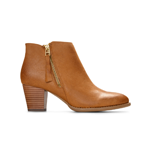
What Is A Bunion?

Approximately one in every three Americans—the majority of whom are older adults and women—deal with bunions during their lifetime. Yet despite their prevalence, bunions are not very well understood by most people. Just what is a bunion and how does it occur in the first place? Who among us is most at risk, and what can those people do to prevent bunions?
A bunion is a bone protrusion at the base of the big toe. A bunion forms when the bones in the front part of your foot move out of their usual alignment. When that happens, the tip of your big toe is pulled towards the smaller toes of your feet, causing that joint at the bottom of your big toe to jut out at an odd angle.1
In this blog, we’ll do a deep dive into this somewhat perplexing issue and go over a few common causes. We’ll also be talking about prevention so that you’ll learn everything you need to know about bunions and how to make sure you don’t end up having to deal with them.
How Do Bunions Happen?
When your foot bones aren’t in their proper places, bunions may make an appearance. But how do feet get out of alignment in the first place?
Causes of bunions can include:
- Improper footwear – Bunions are exacerbated or brought about by wearing shoes that are narrow or tight.
- Genetics – But bunions can also be passed down through our genes. How? It’s a sort of side-effect of the structure of our feet and how we walk. So if you inherited your Great Aunt Jean’s flat feet and she suffers from bunions, chances are you may also deal with bunions in your lifetime. Flat shoes for women who do experience hereditary bunions can be of great benefit.
- Calf tightness and foot mobility – The tightness of your calf muscle or the instability of the muscles in your feet can also lead to the formation of bunions because these issues mean that an excess of pressure is placed on the forefoot.
- Health conditions that can cause strain on the feet – Pregnancy, obesity, arthritic issues in the feet, and flat feet can also bring out the problem over time, as can standing around for long periods of time.
Symptoms of Bunions
Bunions can interfere with your normal activities, like walking and running, and they can also make it harder to choose the best shoes that fit comfortably and don’t make the foot problem worse. They don’t always hurt, especially at first.
A few of the most common bunion symptoms include:
- Calluses on your other toes from where they have rubbed together
- Consistent foot pain, especially when walking or standing
- Decreased flexibility within your big toe
- Redness or inflammation around the protrusion on your big toe
As you get older, bunions can become more painful and pronounced, especially if you don’t take good care of your feet. You might be wondering what causes foot pain related to bunions exactly. The toes can crowd together, creating a permanent deformation. If you have noticed that bunions have begun to form on your feet, it’s absolutely critical that you address the problem early on.
Will Bunions Go Away On Their Own?
Unfortunately, bunions don’t really go away on their own. Once your toes have begun to slide into themselves, the problem won’t just recede with a few days of rest.
Some people who begin to develop bunions actually track the size of the bulge to see how it changes over time. They can then adjust their exercise routine and shoes accordingly to accommodate the change happening on the ground.
Once bunions have become painful and begun to cause disruptions in your lifestyle, bunion surgery becomes a possibility. That said, bunion surgery isn’t very common, and, as with many medical issues, the best bunion treatment is prevention. Below, we’ll look at ways to prevent bunions before discussing treatment options.
How to Treat Bunions
As we mentioned above, surgery is an option for bunions, but it’s often the last resort. If you are pain-free and able to fit your foot into normal shoes, you probably don’t need to see a podiatrist about a possible procedure. Instead, try to support your foot’s structure and mechanics by wearing shoes that help alleviate the problem.
Instead, a proven bunion treatment lies in finding the right shoe
- Width – Look for a shoe that is wide enough to accommodate the protrusion in your foot without exacerbating inflammation.
- Flexible – It also means finding a shoe with a soft and comfortable upper section to accommodate your feet.
- Supportive – Wearing shoes that contain orthotics or allow for insoles will also provide more support and stability.
You should also take particular care when going for shoes that are traditionally unsupportive, like flip-flops or high heels. But this doesn’t mean you have to say goodbye to cute and fashionable footwear. For shoe options that are both supportive and stylish, check out our blog post on the Best Sandals for Bunions, featuring adjustable strappy sandals, wedge slides with arch support, and more.
At Vionic, we design sandals, sneakers, wedges, and more that are comfortable and roomy yet still stylish enough to wear to work or out to dinner. They’re also podiatrist-approved; our shoes carry the APMA Seal of Acceptance, which means they’ve been tested by the American Podiatric Medical Association and found to promote good foot health.

How to Prevent Bunions
When it comes to preventing bunions, the key is to not cause further aggravation to the problem. Some of our top prevention techniques include:
- Wearing comfortable and supportive shoes – This one is key. If you’re consistently wearing shoes that are squeezing your toes together, failing to provide arch support, or forcing your foot into an unnatural shape, you are putting yourself at risk for bunions. Look for a supportive and comfortable shoe type with a roomy toe box and avoid heels that are over 1-2 inches.
- Avoid high heels as much as possible – Bunions are actually about ten times more common among women than men, which possibly results from the fact that women’s fashion footwear can go to extreme lengths. High heels force your body to put more weight on the front part of your foot, resulting in bunions. Avoid this type of shoe, or seek out an option with a low heel and supportive arch.
- Begin taking care of your feet – Bunions respond to a variety of home prevention methods, which is why we recommend developing a prevention routine that you can carry out at the end of the day. Soaking your feet in Epsom salt is a good way to reduce inflammation, and so too is icing and elevating the feet and getting foot massages.
- Managing your weight – Unfortunately, obesity puts you at risk for bunions because excess weight increases pressure on your feet. It can also lead to the collapse of the arches, which will negatively impact your foot’s biomechanics and lead to a bunion deformity with the bones of your toes.
A good rule of thumb is that if something about your shoes or routine is causing foot pain, it’s probably a smart idea to alter or discontinue that activity.
Stretches and Strengthening Exercises for Bunions
For those looking for a more proactive approach to managing their foot issues, strengthening and stretching are preventative measures that you can undertake at home, the office, or with the help of a physical therapist. Some of the exercises and foot stretches that we recommend include:
- Toe stretches – Maintaining flexibility in your feet will allow you to move more naturally and offset the pain in your toes, arch, and the ball of your foot. To try this, alternate pointing your toes straight out for 5-10 seconds, then curl them under for 5-10 seconds, repeating ten to fifteen times.
- Manual big toe stretches – With your hands, grab your big toe and slowly pull it into proper alignment, taking care to go slow and be gentle. This can help the muscles around the toe loosen up a bit, promoting better foot health. Try this stretch for ten seconds at a time, and repeat it a few times throughout the day.
- Towel curls – Picking up objects with your toes will isolate those muscles and give them a targeted workout, which will help to strengthen them over time. Lay a towel out on the floor, then place your foot on top of it towards the bottom end. Begin to pull the towel towards you by alternatively crimping and releasing your toes. Repeat five times.
These exercises can be performed throughout the day, ideally in the morning and at night. Most of them can be carried out sitting down and only take a few minutes to complete.
If you’re worried about the hassle of adding another routine to your already-busy schedule, try a few of these while watching television or checking your email. Multitasking can make it easier to make sure you actually do your exercises.

Maintain Foot Health With Supportive Shoes From Vionic
Finding the best shoes for your foot problems can have a significant impact on the pain and might even help avoid surgical treatment options. At Vionic, we work with real podiatrists to create contoured, Three-Zone Comfort for stability, arch support, and cushioning that you can feel. Our shoes come in many styles from loafers to flats to sandals, and each pair includes a contour seamlessly engineered right into the sole to support alignment from the ground up.
Browse our heels, flat shoes, and sandals for women and men on our website today, or check out our blog for more tips on how to maintain healthy feet.
Sources:
- “Bunions.” Mayo Clinic. https://www.mayoclinic.org/diseases-conditions/bunions/symptoms-causes/syc-20354799
- “Medieval pointy-toed shoes led to Cambridge bunion surge.” BBC News. 11 Junw, 2021. https://www.bbc.com/news/uk-england-cambridgeshire-57427365
- Plaass, Christian et al. “Short term results of dynamic splinting for hallux valgus – A prospective randomized study.”Foot and ankle surgery : official journal of the European Society of Foot and Ankle Surgeonsvol. 26,2 (2020): 146-150. doi:10.1016/j.fas.2019.01.002










